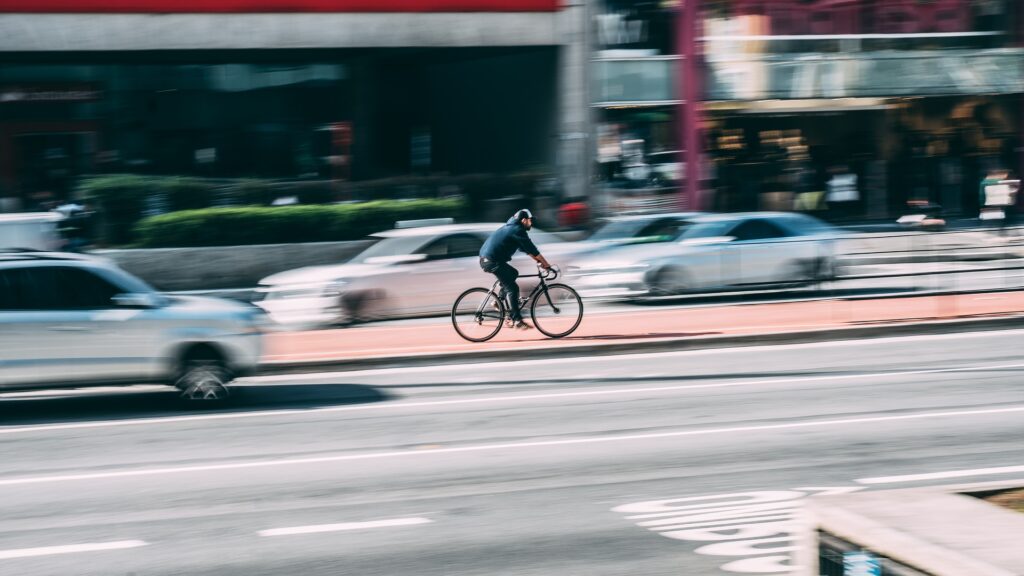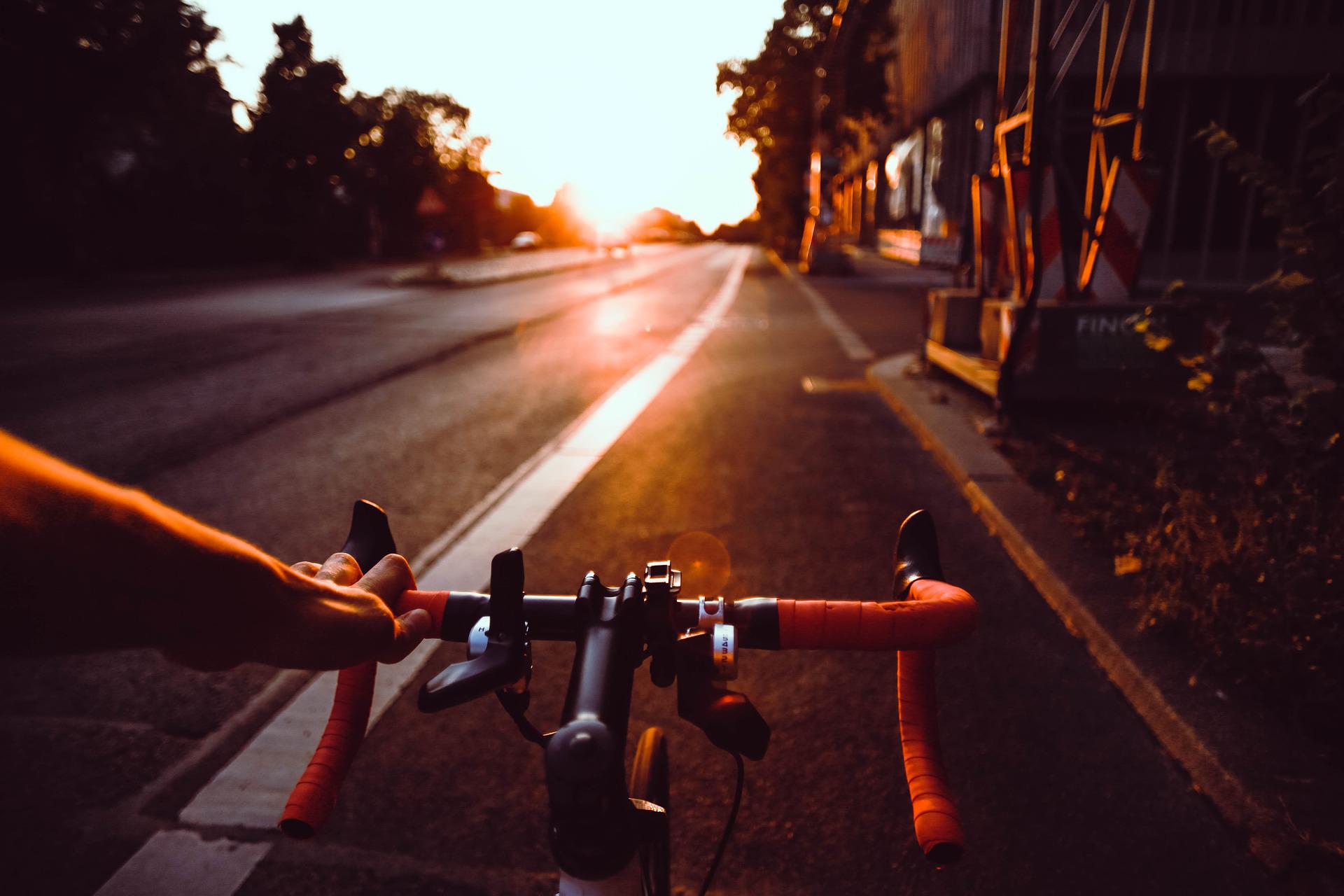By: Ursula Nizalowski
In recent years, gas prices have skyrocketed to ridiculously high rates. As a result, Americans are not driving their cars as much and considering alternative commuting methods. One increasingly popular method is riding a bike, since bicycles don’t cost as much compared to cars. They can also provide a good daily workout before and after spending hours at work. But like cars, there are safety tips to consider as demonstrated by this article.
Pick the Right Bike
Hybrid/Road Bikes
For those living in urban areas, road and hybrid bikes are good for long-distance travel and relatively light in weight. What sets them apart from each other is “Hybrids typically use flat bars rather than drop bars, and are often heavier than road bikes” as said by Cyclingnews. In addition, hybrid bikes can handle gravel and tarmac, whereas road bikes are limited to riding on tarmac surfaces.
Mountain/Gravel Bikes
As the name sounds, mountain bikes are meant for off-road travel or dealing with difficult terrain caused by bad weather. The same is true of gravel bikes, which have now become their own category of bike after they were originally considered to be mere road bikes with greater tire clearance and slightly stouter forks. What makes the two bike types different is mountain bikes are considered to be more stable than gravel bikes due to the larger size of their tires and various tread options.
E-Bikes
Also known as electric bikes, these kind use peddling to power the motor that is attached. For this reason, E-bikes are heavier than regular bikes. While this doesn’t make them easy to carry, then can be used for hauling heavy loads when commuting.

Wear the Proper Gear
Bike Helmet
Though they may not look flattering and often mess up one’s hair when removed, wearing a bike helmet is a must-have for being safe when cycling to work. Because it not only protects the head from the elements, but also helps protect the skull from getting too damaged when an accident occurs. In fact, the state of Colorado requires E-bicyclists under the age of 18 to wear a helmet according to Nolo.
Layers of Clothing
One can wear just about anything when riding a bike, though some articles of clothing should be taken into consideration. First, it’s important to avoid loose-fitting clothing or accessories like scarves since things like that could easily get caught in the bike’s gears and wheels. Second, putting on layers of clothing wouldn’t hurt since the temperature can change throughout the day and it allows one to sweat without ruining one’s work clothes too much.
Bag/Rack
While a car can carry a lot of things, a bike cannot. But that doesn’t mean it’s impossible to carry items when riding a bike, since most people use either bags or racks. The choice depends on how much stuff one is planning to take, and the type of bike that’s being used since “gravel bikes and hybrids have mounts for racks” built into them Liv Cycling says.
Stick to the Road Rules
Position
To successfully navigate the roads while on a bike, it’s important to consider one’s position in relation to the passing cars and motorcyclists. For instance, cycling along the gutters can be risky because Cycling Weekly magazine claims random road debris could puncture one’s tires and leave one stuck if a pothole appears. By comparison, staying on the vehicle’s right-side allows for more maneuverability and visibility.
Signals/Eye-Contact
Another method for making oneself visible to cars and similar vehicles is by using physical gestures to signal them. Some common gestures including making eye-contact with the drivers and using a hand to tell the driver of one’s intended direction. Using these can help the driver as well as protect the cyclist from accidental collision.
Perception
Now regardless of where one is positioned on the road, being alert of one’s surroundings is crucial to avoid potential accidents. Because if one can spot the danger ahead of time, it allows for a quicker response time. For example, if one is passing a parked car in the road it’s better to move a little further into the road in case a car door opens.
Be Prepared
Weather Check
Prior to commuting by bike, it would be a good idea to check the weather beforehand. After all, it can be miserable cycling through torrential rains and blistering snow without the proper clothes on. It can also be dangerous due to the possibility of getting into an accident or even ill from the bad weather.
Bike Check
Even if one’s bike is in perfect working condition, doing a check on each major part of the bike prior to commuting would be good for safety reasons. Some examples include checking “the tire pressure and brakes on your bike, as well as the battery power of your lights” according to Momentum Magazine. These checks may not seem necessary, but they’re a good idea in case something isn’t working and alternate travel plans have to be made.
Item Check
Nothing is more frustrating than leaving the house and realizing midway through one’s commute that an important item was left behind. This could be anything from a packed lunch for work to a bike lock, or even a bike pump. So to avoid such an awkward situation, doing a check on all the items one is carrying on the bike trip might be a good idea.
Route Check
We all have our favorite routes, whether it’s for their convenience or scenic elements. But depending on unexpected factors like the weather or construction, these routes may not be open during the time of one’s commute. That’s why it wouldn’t hurt to plan one’s route ahead of time to get around any road or bike path closures.
Take Anti-Theft Measures
Bike Locks/Locking Skewer
Because bike thefts can happen, it’s good to take preventative measures. A simple way to do this is by getting a bike lock and/or locking skewer. Even locking the wheels separately with a cable lock and removing the saddle would be effective at stopping would-be bike thieves, so long as the equipment is top-rated.
Parking Location
Another simple method for stopping bike thieves is parking one’s bike in a good location. One example would be a well-lit area, since thieves tend not to go to places like that. But even if the area isn’t well-lit, locking one’s bike next to an object that can’t be cut or moved would work just as well.
Accessory Removal
Depending on how valuable the items one carries on the bike are, these should not be with the bike while one is away. Otherwise, a thief will just take the items with nothing to stop them. Thus, removing accessories such as bags and detachable lights might be a good idea.
GPS Tracker
Now this may not seem necessary, but getting a GPS tracker for one’s bike could be helpful if one has an incredibly expensive bike. After all, newer bikes are more valuable to thieves than older ones. So GPS trackers not only “offer an extra level of protection,” but also “can help you to locate your bike if you have had it stolen or can’t remember where it was locked” BikeLockWiki says.
For any further questions regarding bike safety or bike-related accidents, feel free to contact attorney Rick Wagner.

